IBM - Snowlab
NTNU Snowlab
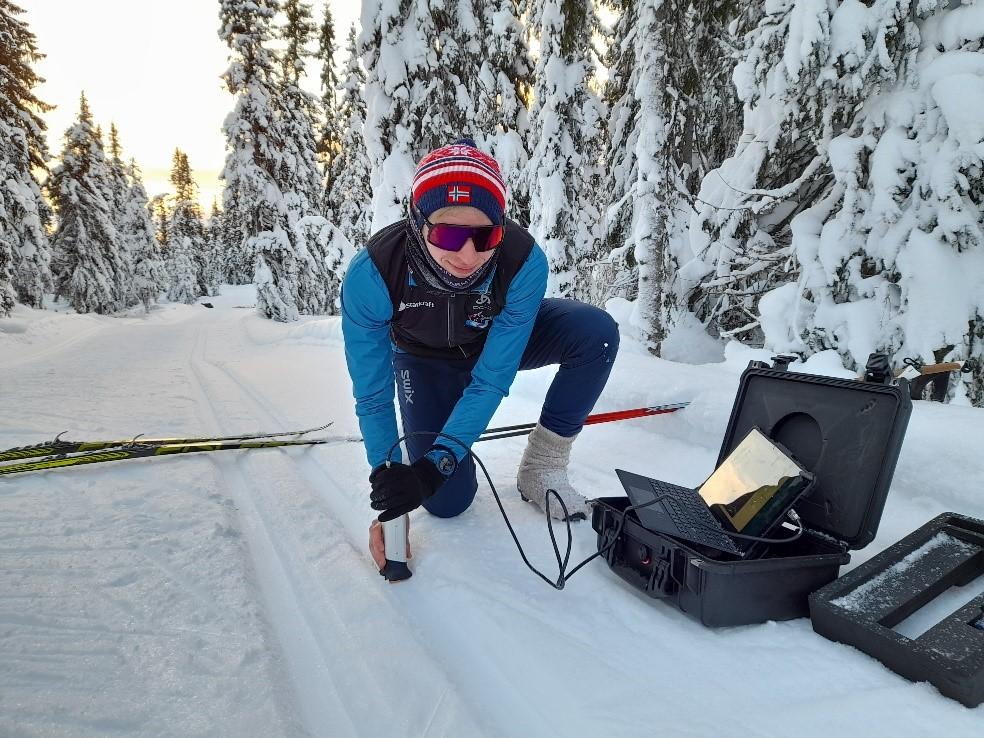
NTNU Snowlab is an advanced laboratory to study different engineering problems related to snow and ice. The core of our facility are two walk-in cold rooms, our custom-made snow machine “LUMI” and an 8 m long high-speed linear tribometer. The laboratory is equipped with a high-speed camera and various snow/surface characterization equipment. The laboratory is mainly used for PhD and MSc research projects.
Laboratory facilities
Optical microscope
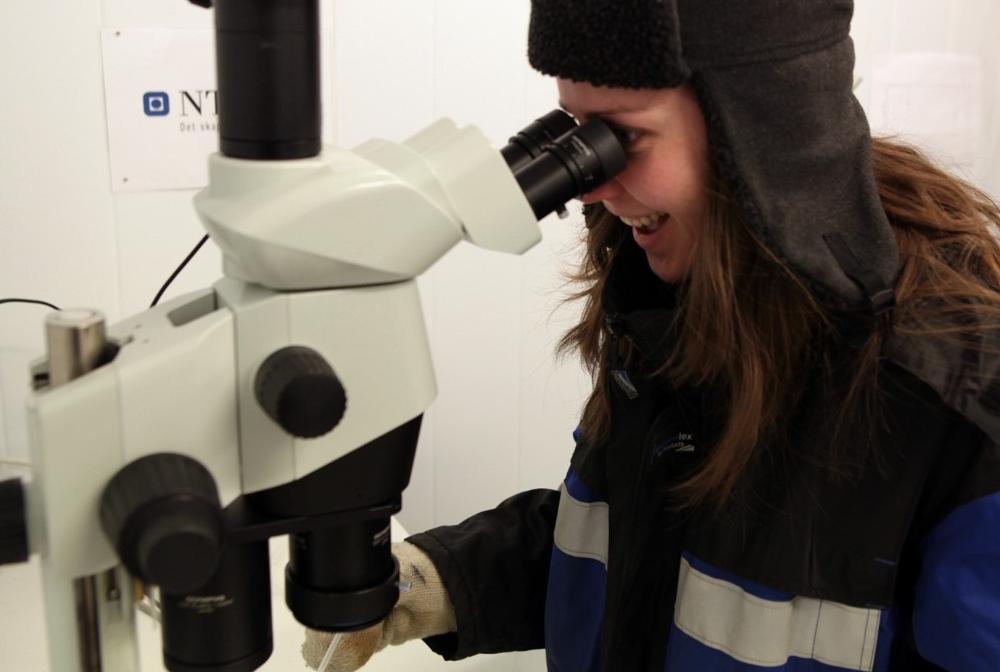
MSc student Wibeke Lende studies the crystallization of super cooled water under cross-polarized light.
With our Olympus SZX16 stereomicroscope we can study and document snow and ice crystals in detail. The microscope is equipped with camera tube with a standard Canon mount. The microscope is equipped with a light stage for cross-polarized light imagery. We also have a cold light source with optical guides for transmitted light imagery.
Calorimeter
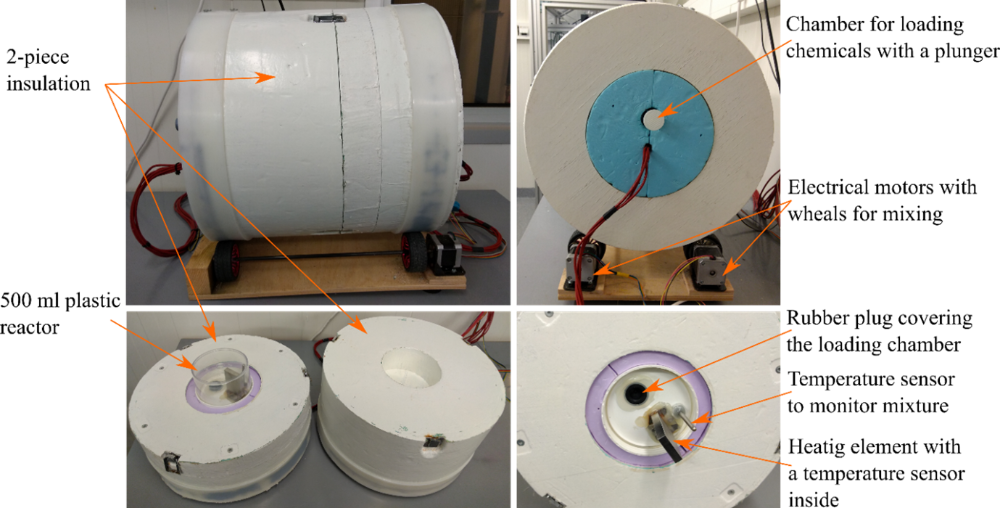
We have developed our own calorimeter for road deicing chemicals. Inside the insulated 500 ml reactor we can conduct melting experiments while having control on the heat fluxes. This has been used to determine both the melting capacity and melting rate of different de-icers. The calorimeter is slowing rocking back and forth, providing a gentle tumble-dryer type of mixing that does not generate significant amounts of heat, and prevents stratification of ice/deicing liquid mixes due to density differences. A Labview-based control system regulates the power of the electric heater and measures the temperatures inside the reactor and the temperature gradient through the insulation
Gel-sight
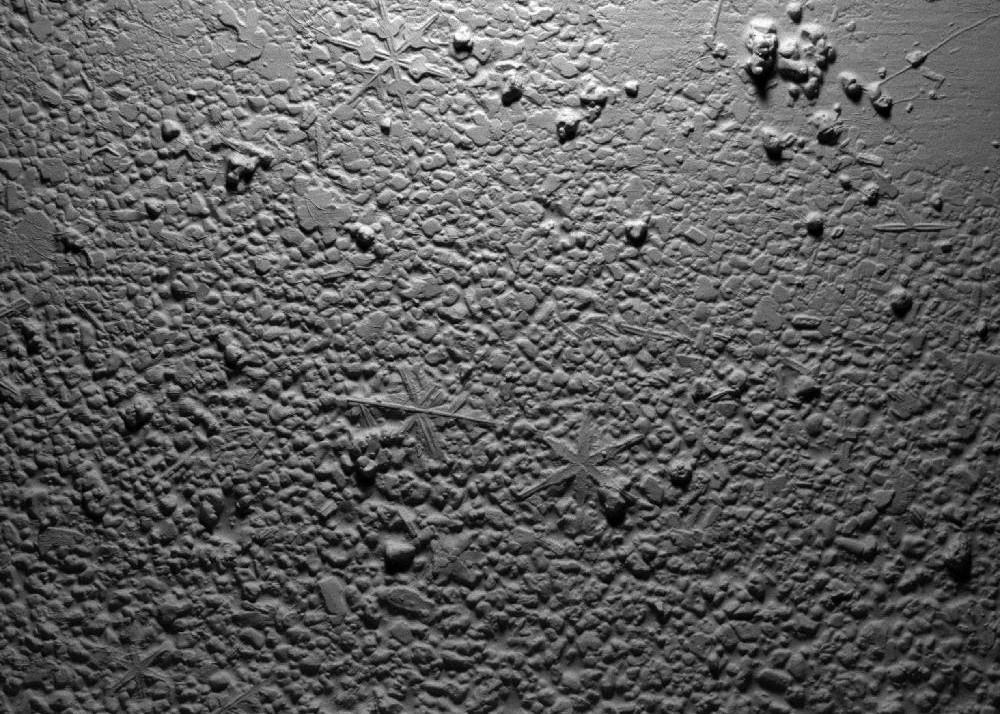
Surface roughness measurements on compacted snow and ice are very challenging. The low strength of the snow often prevents destruction during standard profilometer measurements and the transparent nature limits the applicability of virtually every optically-based surface meteography technique. Our latest investment is a portable GelSight snow surface roughness sensor. The GelSight overcomes the problem of transparenty by pressing a very soft gel on top of the snow. The bottom of the Gel is coated, allowing surface topography and imagery with standard visible light.
The snow machine LUMI

In our snow machine LUMI we produce snow in a way that is very similar to the snow growth process in clouds. At temperatures of about -20°C we evaporate water in water baths and blow cold air over it. This causes the air to become supersaturated with water vapour. This supersaturated air is led into a growing chamber where snow crystals grow on a plastic-coated grid. At regular intervals the grid is set into vibrations and the snow crystals fall into a collection tray. The result is a very light dendritic snow (densities 50-75 kg/m3) that is very similar to naturally fallen snow.
High-speed linear tribometer
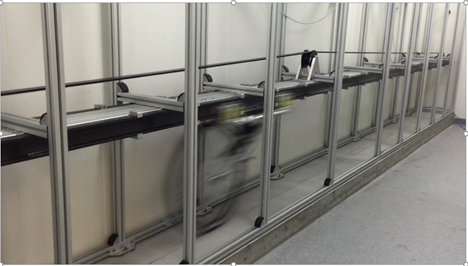
The high-speed linear tribometer is a track where a carriage is accelerated up to 10 m/s by a powerful servomotor. The carriage can deliver a vertical load (downforce) up to 1500 N and we have various set-ups to measure the friction force of sliders (for examples skies) or wheels (bicycle wheels, friction measurement test tires). The carriage has also been used to move other set-ups such as model snow plows, free-rolling tires and sanding spreaders.
High-speed camera
With our Phantom VEO 410L high speed camera we can make “slow motion” footage of very rapid processes. With our “cold light” LED spotlights we have managed to film at 2000 frames per second without significantly heating the snow.
Cold rooms
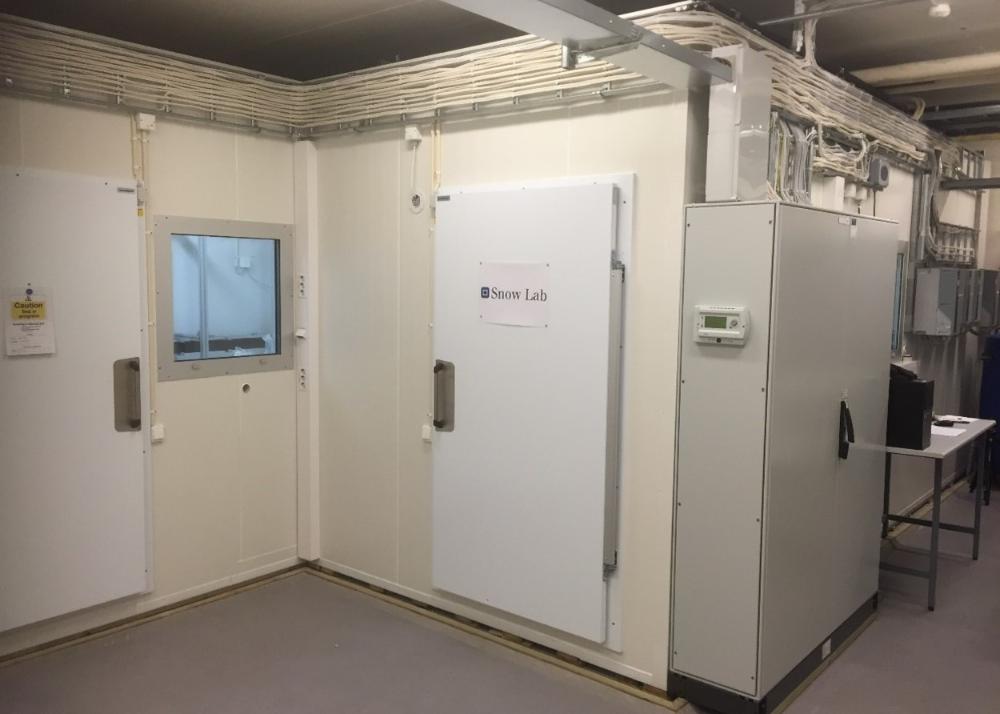
Our two cold rooms provides a good temperature control between -30°C and +30°C. The temperature stability at a single point is within ±0.5°C. The entrance room allows entering the cold rooms without significantly disturbing the temperature or humidity and the the double/triple cooling system ensures constant temperatures also during defrosting the air coolers. The wind speed generated by the fans is below 0.3 m/s, providing calm wind conditions.
Activities
Winter maintenance of roads and runways
Good winter operation of roads and runways is important to get people and goods safely through the winter. Mowing, scattering with sand or salt and monitoring of driving conditions require good competence and understanding of what happens to snow and ice on the road.
Activities includes:
- Compaction of salted snow,
- Hoar frost formation on salted roads,
- Airborne salt,
- Dust depressant,
- Line detection during snow conditions,
- Comparison of different remote sensing devices from road conditions,
- Melting capacity and leting rate of deicers
- Ice penetration test on airport deicers.
Nano2Glide
In Nano2Glide, researchers at NTNU and SINTEF work together with the ski manufacturer Madshus, ski lubrication manufacturer BRAV (SWIX), IDT Solutions and Olympiatoppen to find the best solutions for the new concept. By using advanced nanotechnology techniques, we will create a fluorine-free concept that can compete in the top segment, and at the same time be applicable in grassroots sports.
For more information visit the project webpage

